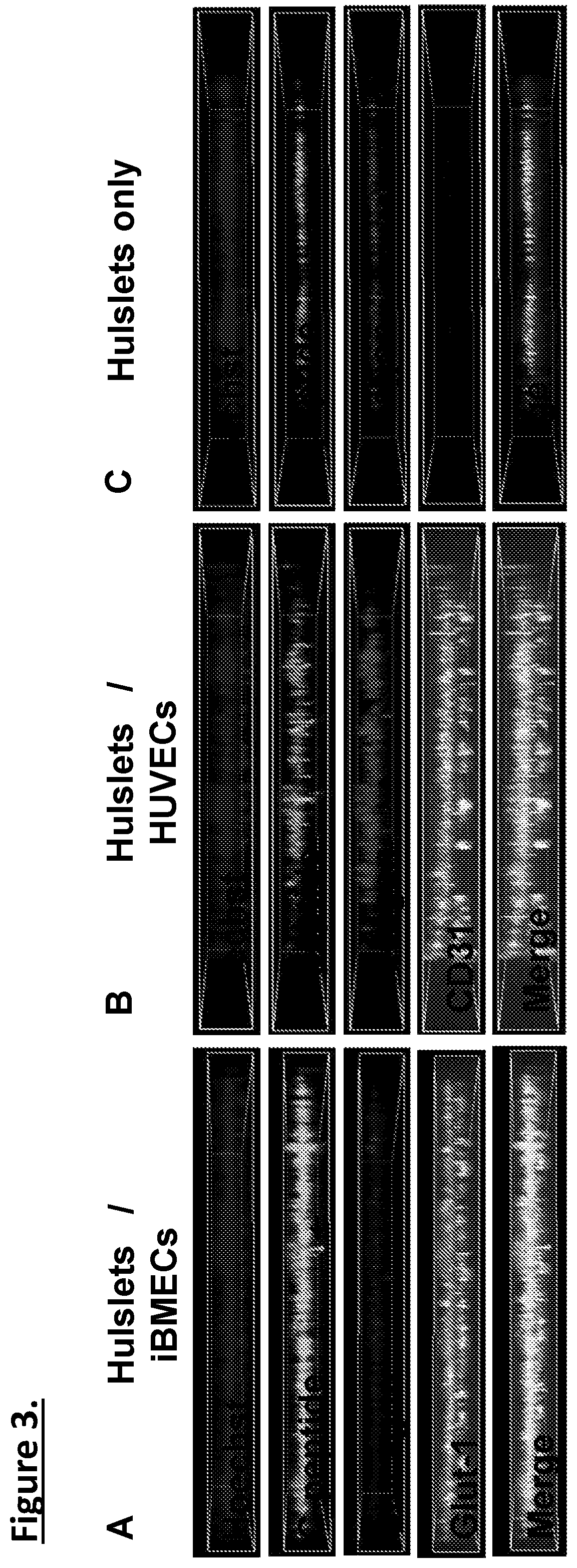Methods of use of islet cells
a technology of islet cells and islet cells, which is applied in the field of culturing cells, can solve the problems of high cost of drug development, poor prediction of disease mechanisms, and failure of inbred rodent models to reproduce the wide range of relative defects in insulin, and achieves the effect of increasing the amount of insulin secretion
- Summary
- Abstract
- Description
- Claims
- Application Information
AI Technical Summary
Benefits of technology
Problems solved by technology
Method used
Image
Examples
example 1
Patient Recruitment and Characterization
[0103]The Inventors have already established iPSCs from 7 non obese (BMI 2) patients with T2D who require insulin therapy (β-T2D) and have been characterized by the mixed meal minimal model to measure both β-cell function and insulin sensitivity. Additional studies can involve recruitment of 10 obese patients (BMI >30 kg / m2) with T2D (auto-antibodies negative) with fasting C-peptide greater than 3 ng / mL that despite insulin sensitizer therapy require more than 1.5 units insulin / kg / day (IR-T2D). Age and BMI matched non diabetic controls are utilized for both T2D groups. The Inventors will perform the mixed meal minimal model test for IR-T2D and both control groups to measure insulin sensitivity and (3-cell function and obtain blood for iPSC derivation from white blood cells as already accomplished for the β-T2D group. Blood will also be obtained to generate iPSCs from the 8 patients with well characterized monogenic neonatal diabetes due to KCN...
example 2
iPSC Derivation: Human iPSC Lines from Healthy Controls and Diabetic Donors
[0104]The Inventors utilize non-integrating oriP / EBNA1-based episomal plasmid vectors to generate integration-free iPSC lines from PBMCs1-6. They do not suffer from the “footprint” problem from exogenous reprogramming factor DNA experienced with other techniques and have remarkable cytogenetic stability compared to other reprogramming approaches. The Inventors' PBMC-based episomal reprogramming approach results p10).
[0105]All iPSC lines are characterized with rigorous certificate of analysis; iPSCs with typical pluripotent stem cell morphology, high nuclear-to-cytoplasmic ratio, expression of pluripotency markers, a normal karyotype, PluriTest assay, and no detectable exogenous reprogramming factor expression of This includes multiple PBMC-derived iPSC lines from healthy volunteers and diabetic patients some of which have already been fully-characterized. All iPSC lines are maintained on defined mTeSR / E8 medi...
example 3
Organ-Chips System
[0106]Organ-chips model human biology by reconstructing microenvironments more closely resembling in vivo than conventional culture. For example, the Inventors have shown that human iPSC-derived endothelial cells and micro engineered organ-chip enhance neuronal development. Given that endothelium is a key component, results using a new diabetes organ-chip program incorporating endothelial cells and demonstrate the influence vascular endothelium on islet maturation and function.
[0107]The microfluidic channels are lined with living human cells. organ-chips are made from transparent polymers. The organ-chips are designed to represent the smallest functional unit of the corresponding organ. The chip's fluid channels mimic blood flow while its transparency allows study of organ function in real time. The chips include two channels—an apical and a basal channel. The apical channel is 1 mm tall and 1 mm wide, while the basal channel is 200 μm tall and 1 mm wide. These two...
PUM
| Property | Measurement | Unit |
|---|---|---|
| thick | aaaaa | aaaaa |
| thick | aaaaa | aaaaa |
| concentration | aaaaa | aaaaa |
Abstract
Description
Claims
Application Information
 Login to View More
Login to View More - R&D
- Intellectual Property
- Life Sciences
- Materials
- Tech Scout
- Unparalleled Data Quality
- Higher Quality Content
- 60% Fewer Hallucinations
Browse by: Latest US Patents, China's latest patents, Technical Efficacy Thesaurus, Application Domain, Technology Topic, Popular Technical Reports.
© 2025 PatSnap. All rights reserved.Legal|Privacy policy|Modern Slavery Act Transparency Statement|Sitemap|About US| Contact US: help@patsnap.com



